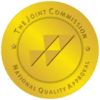Sexual Addiction and Substance Abuse

Written By
DreamLife RecoverySubstance abuse and dependency is rarely a standalone disease. Most people often have other behavioral health issues or problems related to unresolved trauma and are diagnosed with co-occurring disorders or cross addictions. Cross addictions occur when a person switches between abusing substances and behaviors. Co-occurring disorders occur in a person dealing with multiple addictions at the same time. Cross addictions can take on many forms, including:
- Alternating cycles or switching back and forth between addictions
- Combining or fusing addictions to create the perfect high or experience
- Disinhibiting or numbing, the use of a substance like alcohol or cocaine to remove inhibitions or numb the shame associated with sexually acting out
- Replacement is yet another form of a co-occurring disorder by using one dependency, like sex, to replace a more destructive addiction, like alcoholism.
Hypersexuality is a common cross and co-occurring diagnosis. A strong correlation exists between stimulants and sexual obsession. Cocaine, crack, and methamphetamines allow users to be sexually active for long periods of time. They are highly disinhibiting, which places users at high risk for cross addictions. When stimulants and the hunt for sex become paired behaviors, memories and fantasies of past sexual acts can become a trigger for relapse. They can become so tightly paired that using one leads to the other. Getting high and seeking, finding, and having sex becomes one addiction. Stimulants and sexual activities can become so intertwined that they are no longer separate dependencies. Binge drug use is linked to binge sexual activities, increased partners, and unprotected sex. Treatment and recovery are more difficult when people are suffering from both. They must be treated simultaneously, or it is unlikely that they will be able to recover from either.
So, where do you start? In most cases, getting sober is the first step. Remove the substance first and then see what behaviors remain. Trying to address behavioral issues, like sexual addiction, can be nearly impossible while still abusing substances. Finding a caring professional with experience and expertise to help identify changes that need to be made and begin the process of recovery is crucial. DreamLife Recovery tailors recovery plans for each client, as we know one size does not fit all when it comes to finding success in sobriety. The process of recovery involves clearly identifying problematic behaviors and triggers for use. Completing a detailed chemical and sexual history timeline often can help identify cross or co-occurring disorders and can serve as the starting point for a recovery plan. You will complete this history when you are admitted to DreamLife and explore it further with your counselors, doctors, and therapists. As with any other addiction– connection, community, honesty, and hope are essential in facing co-occurring diagnoses and cross addictions.






